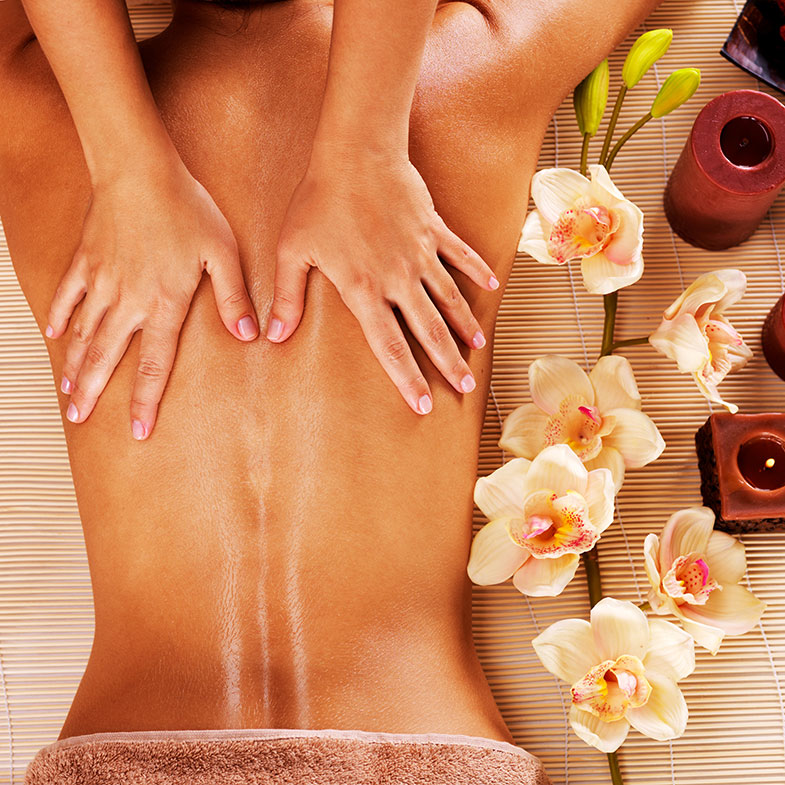You’ve just received the massage of your dreams, and have completely submerged into a state of euphoric bliss. You can see the massage therapist in front of you, you’re aware her lips are moving, but you’re too relaxed to take in her words.
Don’t worry, we’ve all been there.
Your massage therapist is likely instructing what to do now your massage is over, as caring for yourself during your post-massage period is an integral part of your overall experience. Your post-treatment care determines what you get out of each session, and how long your state of relaxation will last.
So, if you missed your massage therapist’s little chat, here’s a quick recap of what you should be doing post-massage.
DRINK WATER
Massage increases your blood circulation and hydrates your muscle tissues. You know those “wow” moments you have during your massage? They’re signifying blood flowing to areas that have been nutrient deprived and blocked by constricted muscles or trigger points. These “stress spots” are potent and toxic to your body, and require the assistance of water to be flushed out.
Water is the drano our bodies need to flush out lactic acid and metabolic waste that causes knots and pain. When a muscle is dehydrated it searches for a water source, and if it can’t easily get it will cling to another muscle tissue instead.
The simple fact is that massages are dehydrating. Kneading and working muscles gets fluid pumping out of the soft tissue and into your circulatory system, where it heads towards your kidneys. Therefore it’s incredibly important to drink water because not only does it flush toxins out of your system, but it ensures that all the good work your massage does doesn’t go to waste!
STRETCH
Having just had a massage therapist break up the adhesions on your muscles, it’s now up to you to stretch in order to reap the benefits. Stretching essentially works to realign your muscle fibers and improve muscle recovery. It also helps to train your nervous system, which is the main determinator when it comes to your body’s flexibility.
Did you know that a person under anesthesia has virtually full range of motion, even in the case of a serious condition like frozen shoulder? This is because the nervous system, not the muscles, is the great limiter of motion. Keep this in mind as you go through your post-massage stretch routine.
HYDROTHERAPY
The healing properties of hydrotherapy are based on its mechanical and thermal effects. It makes use of the body’s reaction to hot and cold stimuli, the protracted application of heat, the pressure exerted by the water, and the sensation of the water itself.
Nerves carry sensations felt by the skin deeper into the body, where these responses then work to stimulate the immune system, influence the production of stress hormones, encourage blood flow, and improve circulation and digestion. Essentially, enjoying hydrotherapy following a massage prolongs your sense of relaxation, helps to induce a deeper night’s sleep, and encourages greater muscle recovery.
EAT
Massage therapy has a big effect on the body’s circulation and stimulates digestion. If you’re feeling a little light headed post-massage, this might be the result of not eating.
Following a massage your body needs to refuel. For this reason, consider taking a snack to your next appointment, such as a banana and some raw almonds. Ensure you keep meals light, and opt for things such as stir-fried vegetables and rice.
REST
It’s not always possible, but always try to schedule your massage appointments at times when you can relax afterwards. The idea behind this is to prolong your sense of deep relaxation for as long as possible. Listen to your body. If you feel like having a sleep, sleep. If you feel like curling up under a blanket and reading a book, do it. If you want to stretch out on the sofa and watch reruns of The Bachelor, indulge. This is your time to recover, repair and re-tune yourself.
HAVE A BATH
Having a bath will encourage rest, and is particularly nice when Epsom salts are added. Adding Epsom salts (magnesium sulphate) will help heal any aches and pains, open up your blood vessels, and increase circulation. A warm shower will suffice if you don’t have a bath. Just remember – the key word here is warm – not cold, and not scorching hot! A super hot bath will increase inflammation, which isn’t a good idea after a massage.
WELCOME ANY EMOTIONS
As your body relaxes, it’s normal for it to release any emotional baggage it’s holding onto. While on one occasion you might feel elated, refreshed and energised, there may be other times when you feel the need to cry. This is okay. Embrace it. Allow it to happen. You’ll appreciate the emotional release afterwards!
PAY ATTENTION TO YOUR BODY’S REACTION
While it’s normal to feel a little sore following a massage (think the day after a good gym workout), it’s not normal to feel pain several days after your massage. If your pain is intense and long-lasting, this is a sign your massage therapist may have gone too hard. Make note of any sore areas and inform your therapist during your next visit. This is important so your treatments can be modified to best suit you.
URINATE
And finally… go to the toilet. By urinating you are letting go of your toxins, so what are you waiting for? Get rid of them!

